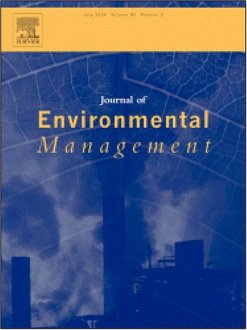The field trial at the Scunthorpe British Steel plant started this month. We are currently monitoring the existing wetland for passive treatment of the steel slag leachate. We are aiming to understand better what happens to vanadium (plant uptake / partitioning) and also to determine the treatment buffering rates. We hope to be able to publish some exciting results soon!
Month: November 2016
Removal and recovery of vanadium from steel slag leachates with exchange resins
 Our team has another publication entitled: “Removal and recovery of vanadium from alkaline steel slag leachates with anion exchange resins” by Helena I. Gomes, Ashley Jones, Mike Rogerson, Gillian M. Greenway, Diego Fernandez-Lisbona, Ian T. Burke, and William M. Mayes, now published on the Journal of Environmental Management.
Our team has another publication entitled: “Removal and recovery of vanadium from alkaline steel slag leachates with anion exchange resins” by Helena I. Gomes, Ashley Jones, Mike Rogerson, Gillian M. Greenway, Diego Fernandez-Lisbona, Ian T. Burke, and William M. Mayes, now published on the Journal of Environmental Management.
This work tested the efficiency of anion exchange resins for vanadium removal and recovery from steel slag leachates at pH 11.5. The results show, for the first time, that the resins can be used successfully to both remove and recover vanadium from steel slag leachate.
As an environmental contaminant, removal of vanadium from leachates may be an obligation for long-term management requirements of steel slag landfills. Vanadium removal coupled with the recovery can potentially be used to offset long-term legacy treatment costs.

The maximum adsorption capacity was 27 mg of vanadium per gram of resin. In the column tests, the concentration in the effluent was only 14% of the initial concentration after passing 90 L of steel slag leachate. We could recover 57–72% of vanadium from the resin. Trials on the reuse of the anion exchange resin showed that it could be reused 20 times without loss of efficacy, and on average 69% of vanadium was recovered during regeneration.